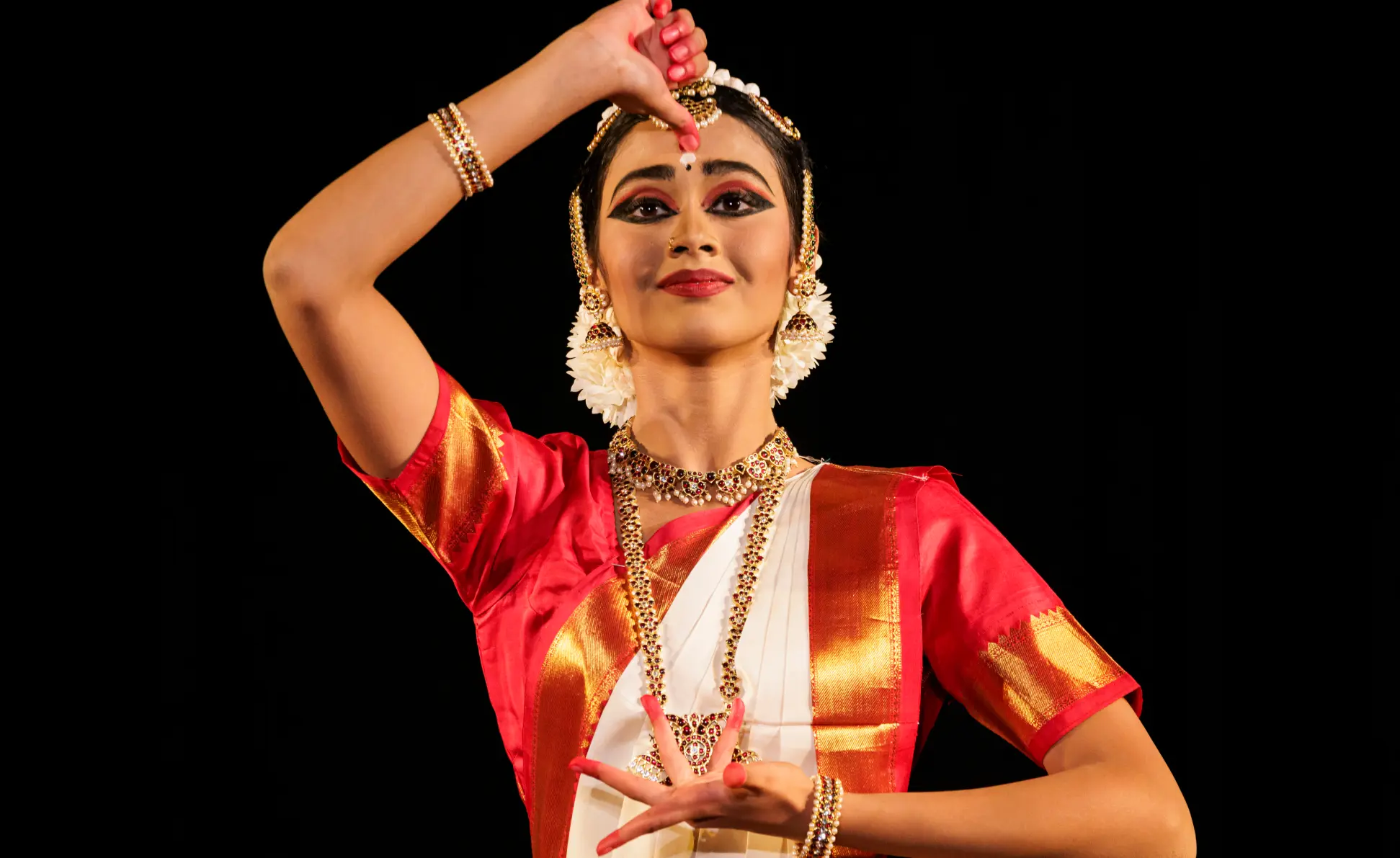
- Home /
- Role in indian cluture

Bharatanatyam holds profound cultural significance in India. It is more than just a dance form; it is a repository of cultural values, traditions, and religious narratives. Through its themes and expressions, Bharatanatyam conveys stories from Hindu mythology, scriptures, and folklore, serving as a medium for cultural and spiritual education.
The dance form also plays a crucial role in promoting Indian cultural heritage on the global stage. Bharatanatyam performances are a staple in cultural festivals, both within India and internationally, symbolizing the richness and diversity of Indian classical arts. It reflects the socio-religious ethos of the community. It serves as a vehicle for preserving and transmitting cultural values, traditions, and stories across generations. The dance form encapsulates various cultural elements, including literature, music, costume, and ritual practices, creating a holistic cultural experience.
Bharatanatyam is known for its intricate storytelling through abhinaya (expressive gestures). Dancers use mudras (hand gestures), facial expressions, and body movements to convey stories from Hindu mythology, epics like the Ramayana and Mahabharata, and various Puranas (ancient scriptures). These narratives often depict the exploits of gods and goddesses, moral tales, and philosophical concepts, making the dance a powerful medium for cultural transmission.
Historically, Bharatanatyam was performed in temples as a form of ritual worship by Devadasis (temple dancers). These performances were considered offerings to the deities, blending art with spirituality. Even today, the dance retains its devotional aspect, with many performances beginning with an invocation to the gods and goddesses. This ritualistic dimension underscores Bharatanatyam’s role in fostering a spiritual connection and communal identity.
Bharatanatyam is deeply intertwined with Carnatic music, a classical music tradition of South India. The lyrics of the songs are often derived from devotional hymns, poems, and compositions by saint-poets. These compositions, set to intricate rhythmic patterns, enhance the emotive and narrative quality of the dance, creating a symbiotic relationship between music and movement.
Apart from the cultural significance of Bharatanatyam, it also frequently draws upon mythological themes, offering a rich tapestry of divine narratives and allegorical tales. Some prominent themes include:
Despite its ancient origins, Bharatanatyam remains a dynamic and evolving art form. Contemporary practitioners continue to explore new themes, innovate within the traditional framework, and address modern social issues through their performances. Cultural festivals, dance academies, and international performances have helped propagate Bharatanatyam worldwide, making it a symbol of India's rich cultural heritage. The dance form not only entertains but also educates and inspires, fostering a deeper appreciation for Indian mythology and culture.
Bharatanatyam is a profound expression of India's cultural and mythological heritage. Through its intricate movements, expressive storytelling, and spiritual depth, it serves as a bridge between the past and the present, preserving ancient traditions while continuing to evolve. As both a cultural artifact and a living tradition, Bharatanatyam embodies the timeless values, stories, and spirituality of Indian civilization, offering a glimpse into its rich and diverse cultural landscape.